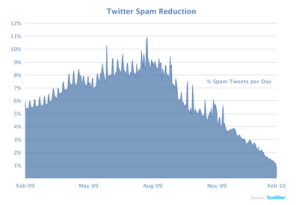“Fermez vos livres, sous vos pupitre. Maintenant! Vite! Vite! Et Prenez un crayon ou un stylo bleu ou noir et passez les cartes.”
Translation: Close your books, put them under your desk. Now! Quickly! And take out a pencil or black or blue pen and pass in the cards.
One of my high school French teachers* used to say that phrase before every single test or quiz. Eight years later, that and everything else I learned in French 1 remain the only things I remember from the language.
On our exams, she required us to write down one or two sentence answers (in French, of course). I always did three to five. People hated me, but it was the first and only non-honors or non-arts class** I took where I didn’t care how many times I got called teacher’s pet because I really liked French.
Before college, being an over-achiever was as far away from cool as the equator is to the Arctic Circle. Post high school, you are hounded about standing out because breaking down norms is what changes the world.
For most of us students, we’re in what I like to call “internship season.” Everyone wants one, but not everybody gets one. When we do get them, we feel like the greatest person to ever walk on planet earth. The only way to get the best ones is to ditch our high school selves and give your intended employer a unique reason to want you. Or so it seems.
As an undergrad I took three unpaid, sports-related internships. I didn’t care if they were unpaid because I thought that was how undergraduate internships worked. I loved my internships and learned a lot about sports media and communication practices in general. As I entered my master’s program, I was under the assumption that sports PR and marketing firms would have an enhanced value for my differences and creativity. I’m different because I chose to keep learning. I like to think my writing style is unique; if I want to get fancy, I could call myself a literary designer. I’m a sports-obsessed female. And if anyone criticizes me I don’t feel like I want to crawl under the covers and bawl my eyes out because at this age, we’re supposed to be different.
Unfortunately, I should know by now what happens when you assume something.
Feel free to converse and debate with me, but in the last three months I’ve found the worst internships for graduate PR majors are in sports PR. I hate to be the one to make the call-outs (or do I…?) but every single sports PR internship I have looked at is not only unpaid but lists the duties in a way that only translates to “follow professionals around, don’t create your own stuff, but HEY, our company looks good on a resume because sooooo many people apply.”
So what do I do? Keep plugging away until I find something sports-related that will embrace my creativity or do I conform to what the firms want, because it’s supposed to be an excellent opportunity?
I’ve decided on neither. I’m not being a sell-out to my dreams, I’m being true to my creativity. If anyone else out there is like me, you’re probably wondering what the point of pursuing non-sports endeavors does for a resume. I say, why try to make something look good on paper if you didn’t really enjoy it. I’m still in the looking/interviewing phase of my internship search. I’ve come across a few agencies that would not only challenge my skills, but allow me to work alongside some of the most creative people in the business. I like what I see from them. I hope they like what they see from me.
Maybe the problem with sports PR internships is that sports PR itself isn’t given high regard. Only .0175 percent of bloggers (at most) referenced sports PR in the last 30 days. And most sports organizations handle their own PR rather than using outside assistance from agencies. I’m not saying this is a bad thing, but if you’re going to use the same business plan, year after year, season after season, you aren’t really changing with your target audience.
Writing is part of PR, or any other marketing, advertising, communications or design business. It’s the part I like to think I excel the most. If I can’t work somewhere where I can write, in addition to learning new skills, what’s the point of putting in the time? Do I want to work in the sports industry or at least handle sports clients someday? Absolutely. But at this point, I’d rather work on what makes me stand out than fall into a pattern of mediocrity. If there’s anything else I learned in that French class besides how to conjugate a verb, it’s that you should never settle for anything less than your best work, even if you have to take a different path to get where you think you want to be.
*********
*When I transferred my sophomore year, my new French teacher failed to really get me to understand the language past a basic level. She was a wonderful, nice person, but never reached me like my old teacher had. To this day, I’m not really sure who’s at fault for this.
**I say non-honors or non-arts because those were the classes it was okay to try in. These classrooms were the only safe places to excel. We weren’t pressured into mediocrity because the average and under-achieving people were the outcasts. And probably still are.




